|
|

|
Porsche, and the Porsche crest are registered trademarks of Dr. Ing. h.c. F. Porsche AG.
This site is not affiliated with Porsche in any way. Its only purpose is to provide an online forum for car enthusiasts. All other trademarks are property of their respective owners. |
|
|
| andys |
 Feb 21 2013, 12:43 PM Feb 21 2013, 12:43 PM
Post
#1
|
|
Advanced Member     Group: Members Posts: 2,165 Joined: 21-May 03 From: Valencia, CA Member No.: 721 Region Association: None 
|
Here's the start of a retrospective build thread of my LS1 conversion. It took a few years to get it done mostly due to not wanting to be a slave to the project, and work on it for the enjoyment; and of course when family obligations allowed......teen daughter and high maintenance wife (IMG:style_emoticons/default/biggrin.gif)
What I started with was a local orignal owner '75 2.0 with 139K miles. The original owner "drove the heck out of it" until something died in the electrical system and he parked it in the garage for 14 years, as evidenced by the renewal tags. Only body damage was when he submarined the rear of a Mustang and creased the hood and flattened the left signal light pod. Otherwise, it was a good condition rust free (SoCal) car. Brief specs are: '01 LS1 Z28 motor, Audi 01E 6 speed tranaxle, 911 front suspension, custom made rear trailing arms, Koni shocks, 993 wheels, and AC. Below, are photos of what I started with, and what I ended-up with. I'll do my best to re-trace the build process, so if you have any questions along the way, please ask. BTW, how does one place text between photos in the same post? Andys Attached thumbnail(s) 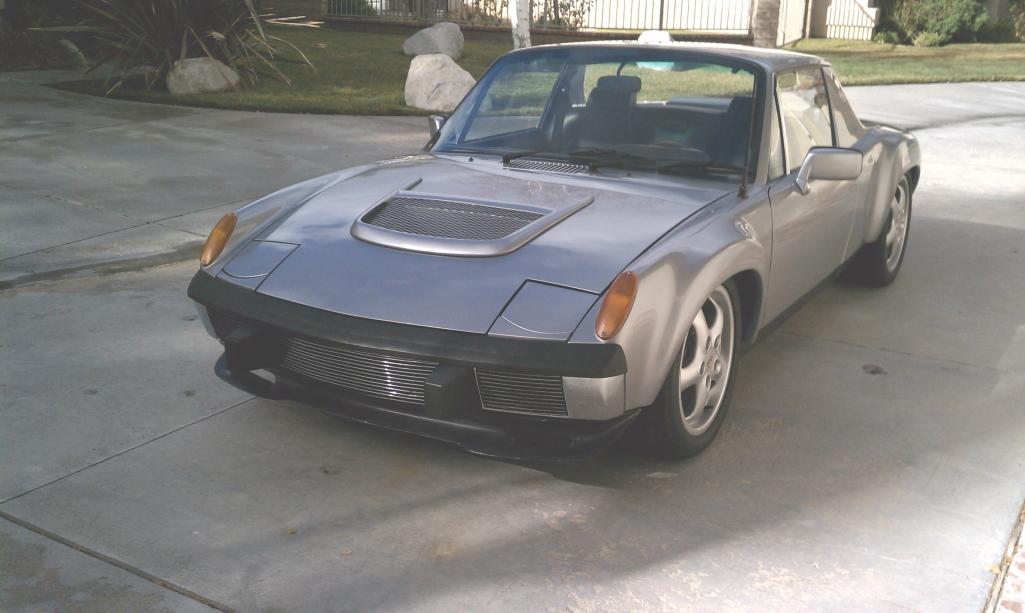 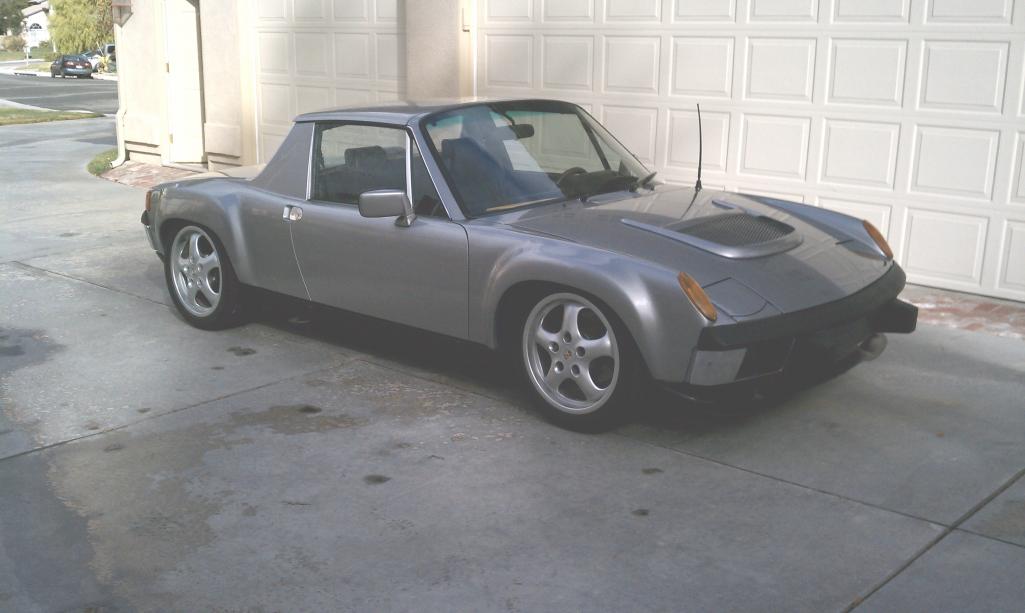 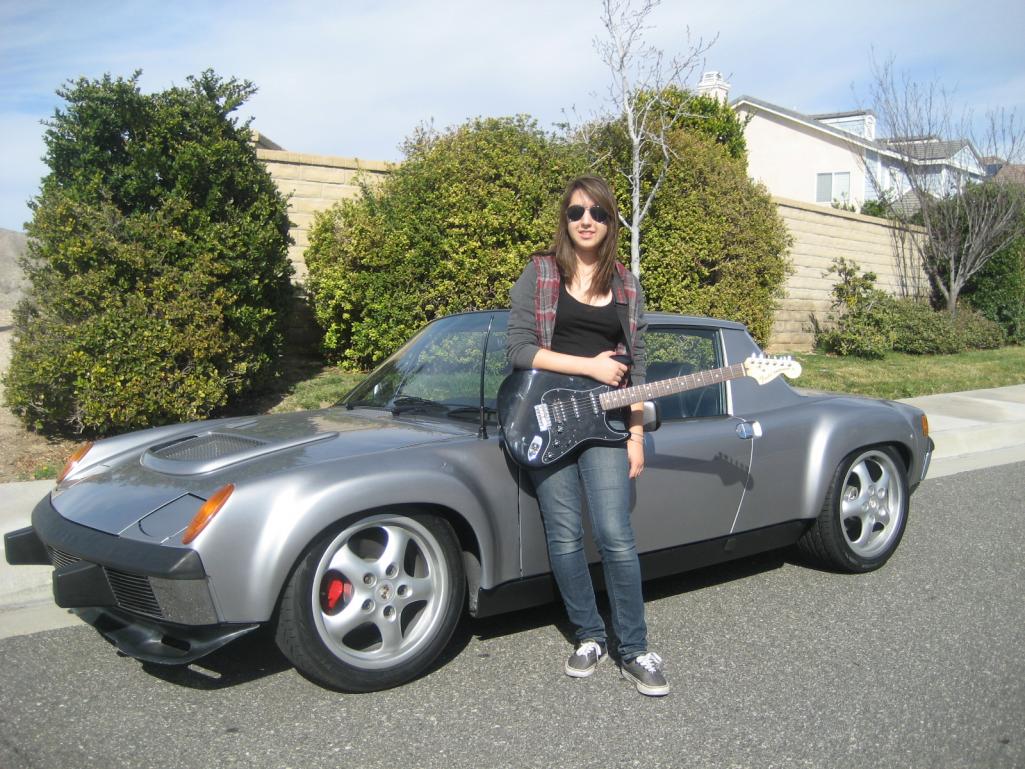 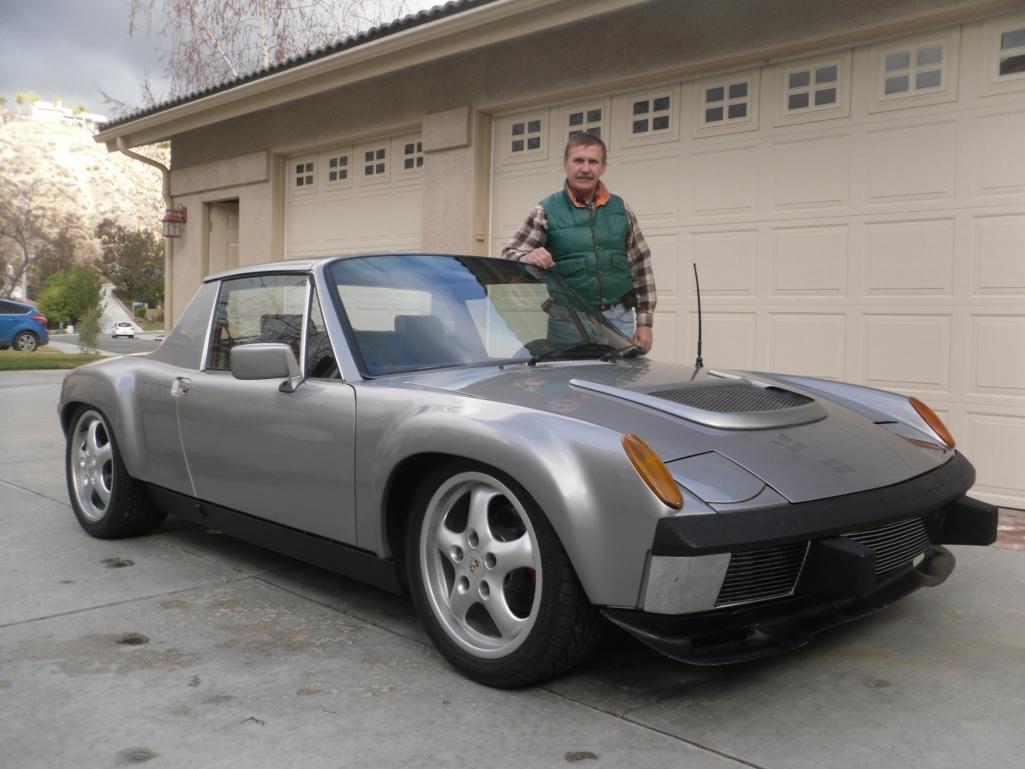 Attached image(s) 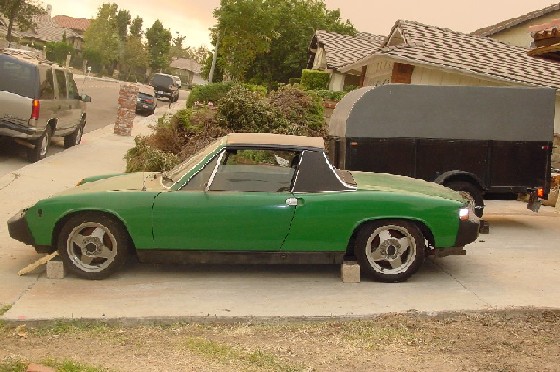 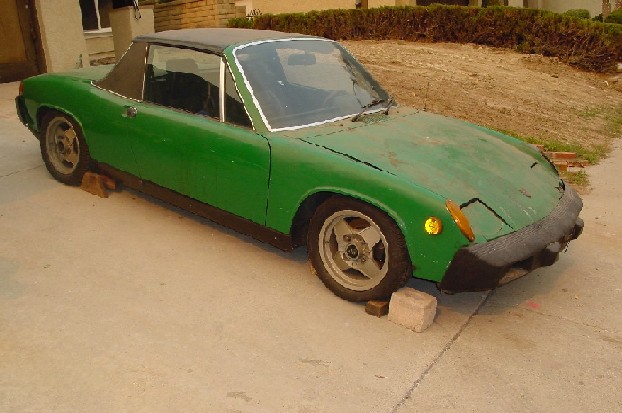 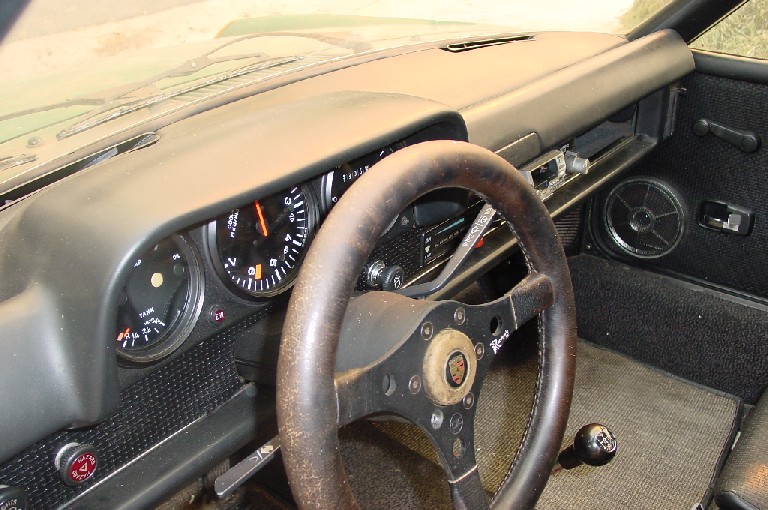
|
  |
Replies
| andys |
 Apr 11 2013, 12:20 PM Apr 11 2013, 12:20 PM
Post
#2
|
|
Advanced Member     Group: Members Posts: 2,165 Joined: 21-May 03 From: Valencia, CA Member No.: 721 Region Association: None 
|
Thought I'd take y'all through the AC system. I posted some of these photos before in answer to another thread, but hopefully these will provide more info.
I bought a Hot Rod Air under dash evaporator based on it's compatability with my existing LS1 variable volume compressor. Vintage air claims their system is not compatible with this copressor, therefore my decision. The Hot Rod Air evaporator includes heat, and has defrost. The Hot Rod Air guys were very helpful, however they apparently went out of business not long after I received the unt from them (IMG:style_emoticons/default/sad.gif) For the condensor, I bought a Vintage Air 12"x20". Since the LS1 PCM has the capability to control the AC, I decided to run a GM AC refrigerant pressure sensor rather than a trinary switch. The GM PCM controls the compressor cycling from the AC request signal output, turns on the radiator fans (and truns them off over 40 MPH), and of course monitors the pressure. It turned out that the biggest challenge, was routing the refrigerant hoses. The 914 just doesn't give you many favorable options in this regard, so I did some serious head scratching and came up with the following. I really dislike the original 914 dealer installed hose routing where they punch holes through inner fender panels ans such, so I went in another direction. The first decision was to use reduced diameter barrier hose, which as the name implys, its diameter is smaller that the standard hose of the same size. Though the fittings are less common, the smaller diameter hose made the routing much nicer. Starting at the compressor, I routed the -8 pressure and -10 suction hoses through the engine firewall and into the lower right passenger side using bulkhead fittings. The hoses run under the engine shelf, pass through the firewall, then with 90 degree ported fittings, the hoses sweep downward and run along the floor where it meets the long in the cabin. You'll see in the photos how the ported fittings intrude into the cabin behind the seat. To keep the seat from crashing into the fittings, I made some seat stops in the seat rails. I only needed to shorten the seat travel by 7/8", so it is really un-noticable. I painted the fittings flat black, so they go un-noticed (and they're behind the seat anyway). Held in place with Adel clamps, the hoses run forward; the -10 to the evaporator, and the -8 forward through the lower floorboard bulkhead, under the fuel tank, through the front trunk blukhead, and on to the condensor. The -6 high pressure hose runs from the condensor to the drier. The GM refrigerant pressure sensor is attached to one of the un-used drier ports using an adapter. From the drier, the -6 hose parallels the -10 hose under the fuel tank and through the floorboard and to the evaporator. By running the hoses along the floor and long joint, once the carpet is in place, it is completely un-noticable. Back at the compressor, I had to get a custom compressor block made such that the hoses would point in the most favorable direction; that was a tough one, as there's so little room to route the hoses effectively away from the headers and keep from abrading against the chassis. I also made a heat shield between the header and the compressor.The custom compressor block was made by Doc's Blocks (Stark Mfg), which would make anything custom from your drawing but unfortunately they've changed thier business model and no longer do custom work and sell only through distributors.....This is really too bad, as they were a fantastic resource up until that time....and their prices were great! For the heat function, I ran two -8 hoses through the passenger side heater duct. I first wrapped them with extra thick electricians tape to help guard against any incidental abrasion. I added 1/2" (-8) x 5/8" adapters on heater core side which made things less tidy than I would have liked, but they're hidden out of sight anyway. The heater (hot water) control valve (HCV) is in the engine compartment. The LS1 heater water flow system logic is such that the HCV is normally open with the engine off (no vauum), but once the motor is started, the vacuum closes the HCV. This requires a different approach to the vacuum switching valve (VSV). You need a VSV that is normally open until heat is requested at which point the VCV closes and vents the NO side which allows the HCV to open. I found a VSV from a Toyota (NAPA P/N: CRB 226873) that had the appropriate logic, so all is good. For a vacuume source, I ran some 1/8" nylon vacuum tubing from the motor to the VSV through the center tunnel, then from the VSV back to the HCV. The nylon tubing is small and easy to route. As always, please ask. Attached thumbnail(s) 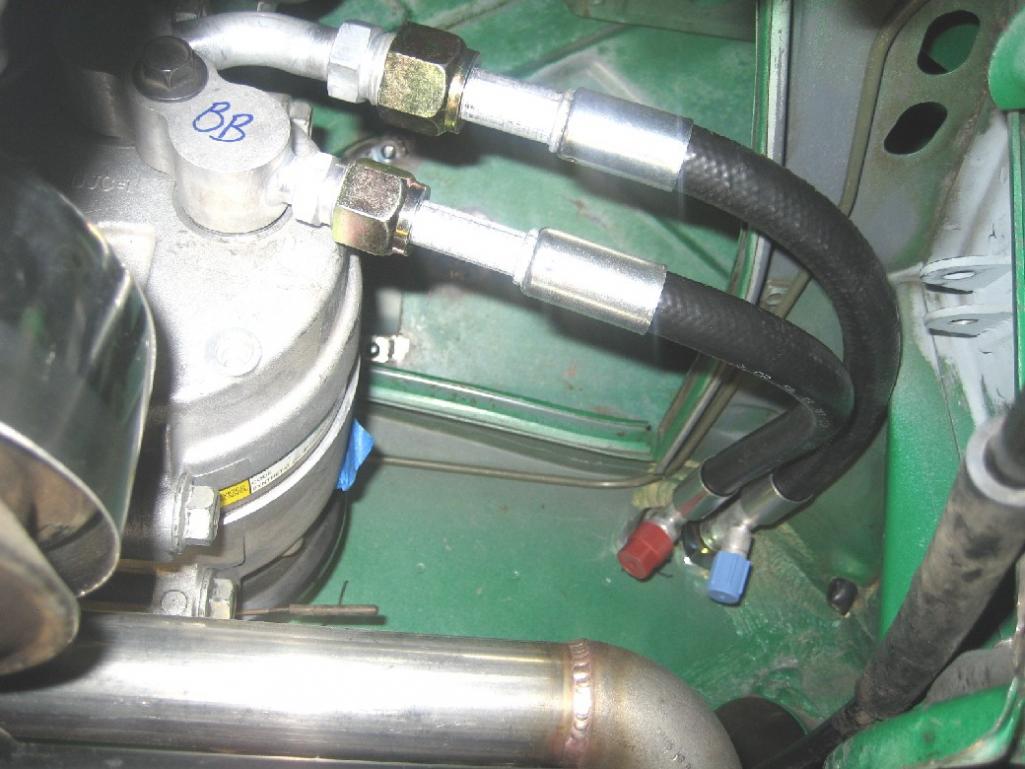 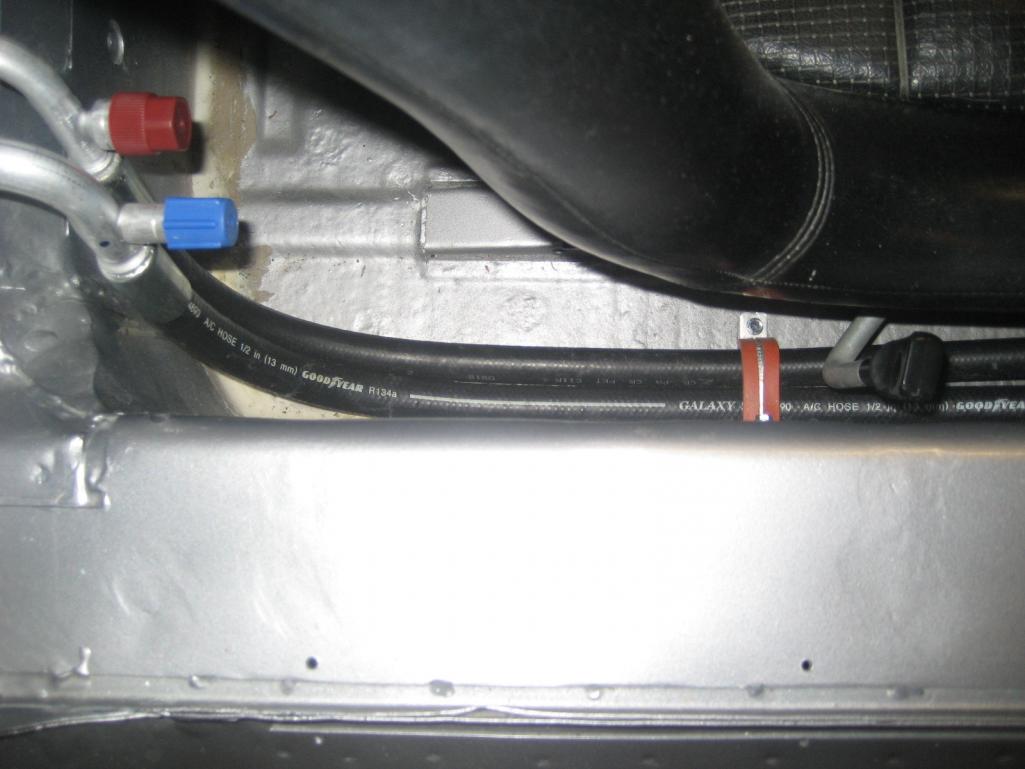 Attached image(s) 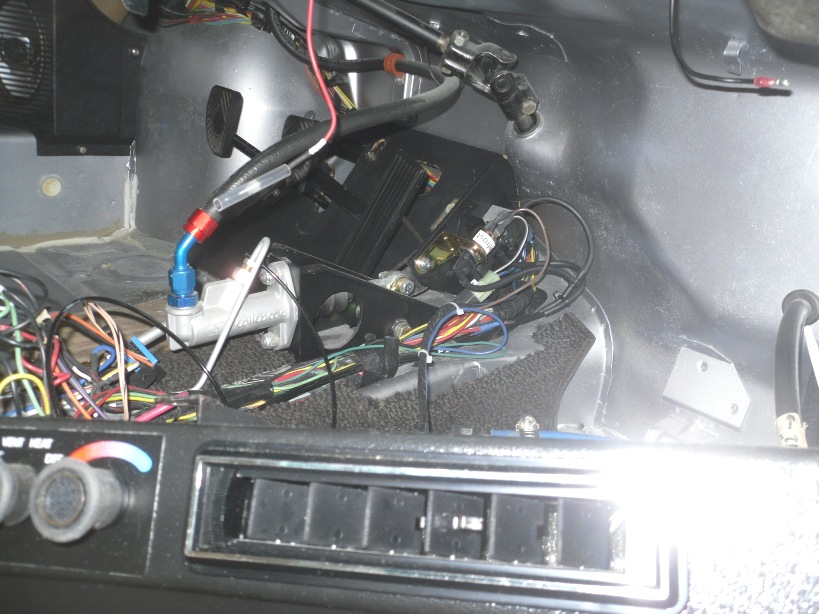 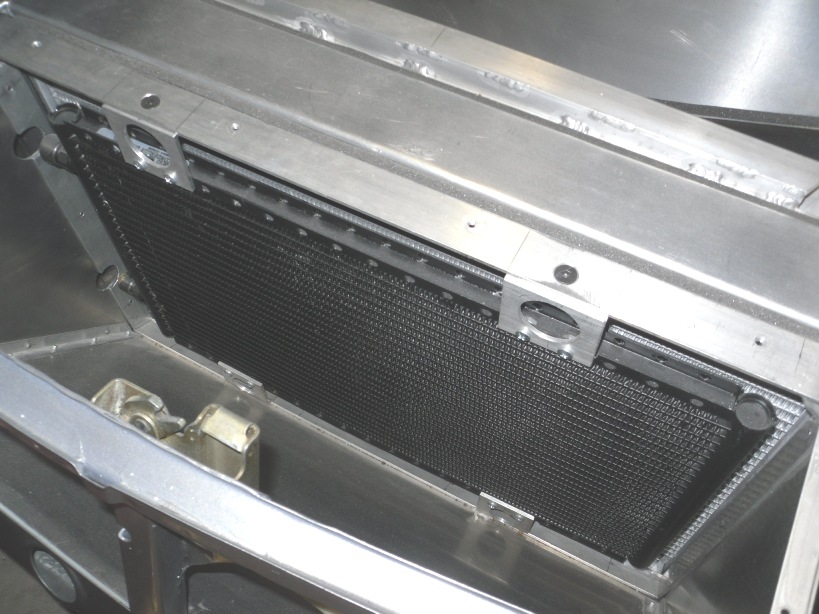 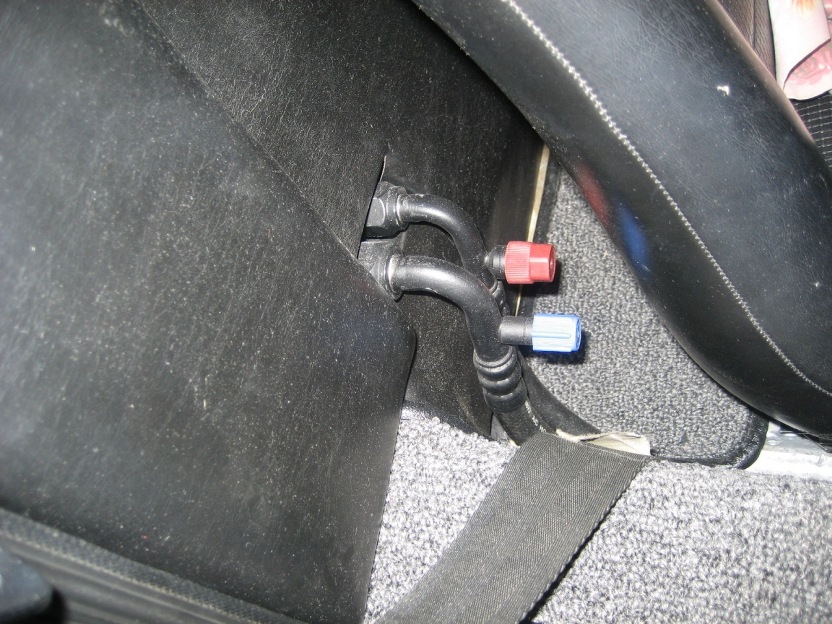 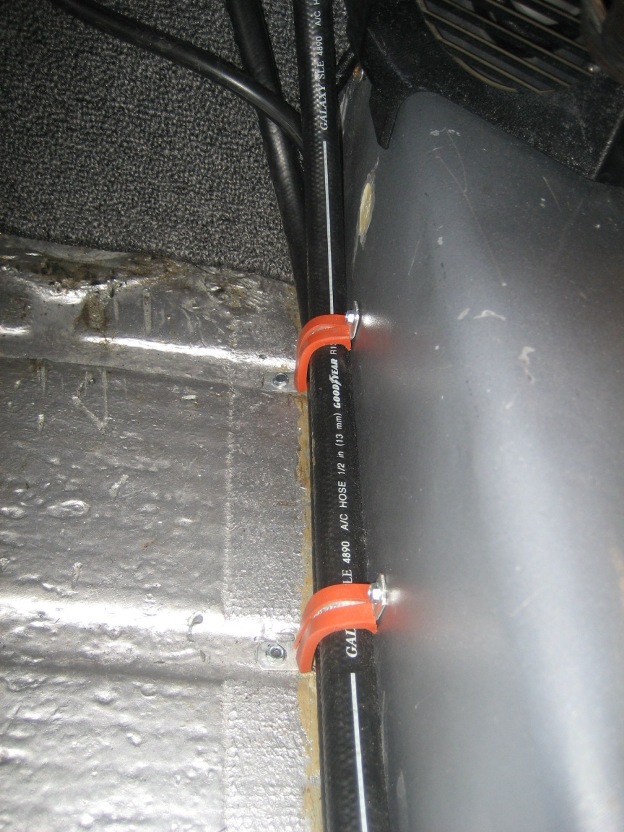 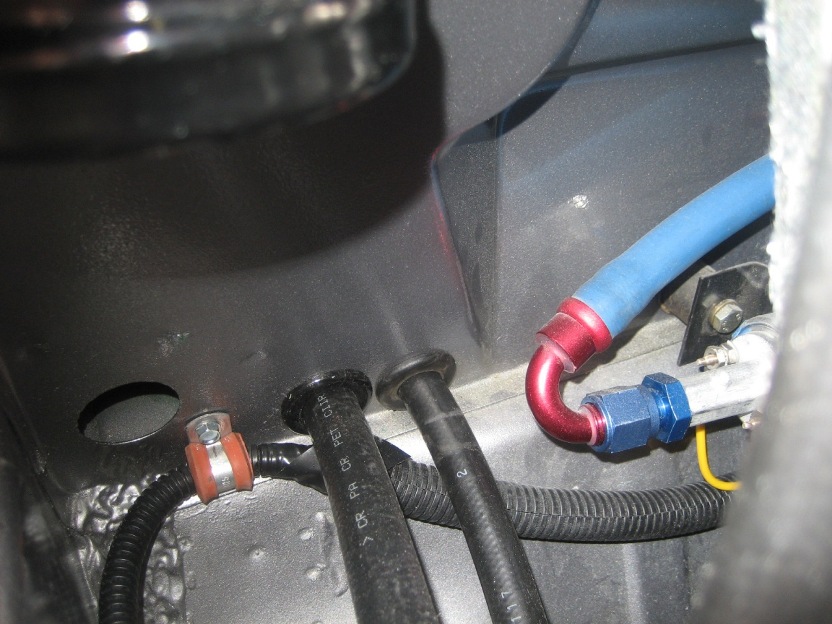 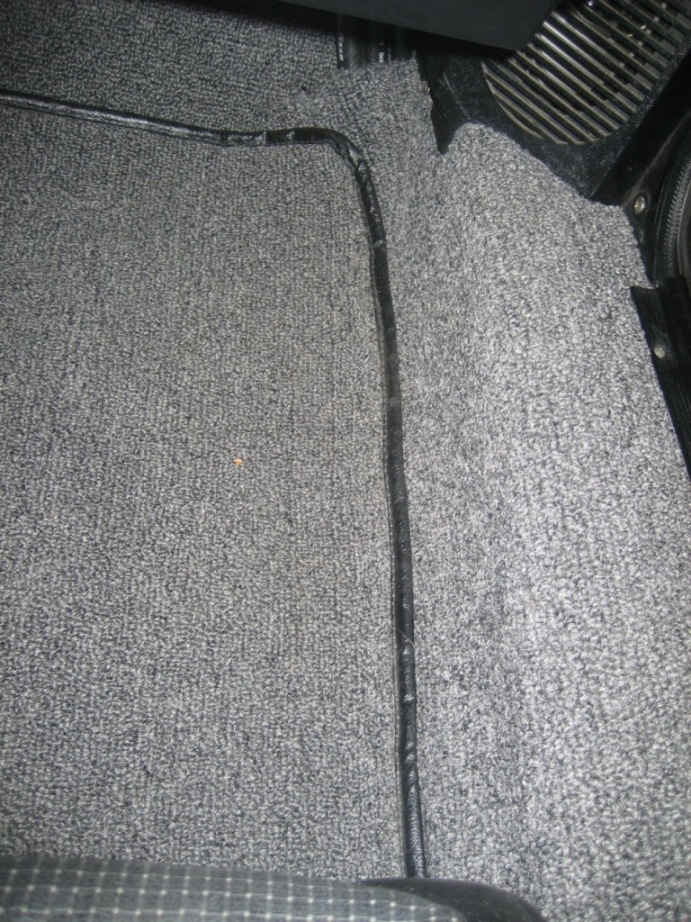
|
Posts in this topic
 andys LS1 Conversion Feb 21 2013, 12:43 PM
andys LS1 Conversion Feb 21 2013, 12:43 PM
 Tom_T In Full Edit mode - just add space lines with your... Feb 21 2013, 12:55 PM
Tom_T In Full Edit mode - just add space lines with your... Feb 21 2013, 12:55 PM

 andys
In Full Edit mode - just add space lines with you... Feb 21 2013, 01:16 PM
andys
In Full Edit mode - just add space lines with you... Feb 21 2013, 01:16 PM

 worn
In Full Edit mode - just add space lines with yo... Feb 21 2013, 02:07 PM
worn
In Full Edit mode - just add space lines with yo... Feb 21 2013, 02:07 PM
 andys I decided quite quickly, that I wanted to go with ... Feb 21 2013, 01:11 PM
andys I decided quite quickly, that I wanted to go with ... Feb 21 2013, 01:11 PM
 andys I wanted to avoid having a motor shipped, so I sta... Feb 21 2013, 02:34 PM
andys I wanted to avoid having a motor shipped, so I sta... Feb 21 2013, 02:34 PM
 andys I wanted to start by adapting the motor to the tra... Feb 21 2013, 05:48 PM
andys I wanted to start by adapting the motor to the tra... Feb 21 2013, 05:48 PM
 Bruce Hinds Tell us about that jack! Feb 21 2013, 06:33 PM
Bruce Hinds Tell us about that jack! Feb 21 2013, 06:33 PM

 andys
Tell us about that jack!
Bruce,
I spend 6 ... Feb 21 2013, 06:47 PM
andys
Tell us about that jack!
Bruce,
I spend 6 ... Feb 21 2013, 06:47 PM
 turk22 Lovin this story and the work you did.
Looking fo... Feb 21 2013, 07:25 PM
turk22 Lovin this story and the work you did.
Looking fo... Feb 21 2013, 07:25 PM
 Bruce Hinds ask about the jack!
Well yeah... the cars fre... Feb 21 2013, 07:47 PM
Bruce Hinds ask about the jack!
Well yeah... the cars fre... Feb 21 2013, 07:47 PM

 andys
ask about the jack!
Well yeah... the cars fr... Feb 22 2013, 10:27 AM
andys
ask about the jack!
Well yeah... the cars fr... Feb 22 2013, 10:27 AM
 kg6dxn Keep going! We need more!
I know you did ... Feb 21 2013, 07:47 PM
kg6dxn Keep going! We need more!
I know you did ... Feb 21 2013, 07:47 PM
 andys With the motor and transaxle coupled together, I n... Feb 22 2013, 12:32 PM
andys With the motor and transaxle coupled together, I n... Feb 22 2013, 12:32 PM
 TurboWalt Great work, keep the pics coming! Feb 22 2013, 02:15 PM
TurboWalt Great work, keep the pics coming! Feb 22 2013, 02:15 PM
 BIGKAT_83 Great work! keep the pictures coming. I keep c... Feb 22 2013, 02:29 PM
BIGKAT_83 Great work! keep the pictures coming. I keep c... Feb 22 2013, 02:29 PM
 andys While not exactly in the correct sequence of the b... Feb 22 2013, 03:07 PM
andys While not exactly in the correct sequence of the b... Feb 22 2013, 03:07 PM

 worn Amazing. Inspiring. I wanna drive it! Feb 22 2013, 09:52 PM
worn Amazing. Inspiring. I wanna drive it! Feb 22 2013, 09:52 PM
 rick 918-S :beer2: :welder: :sawzall: :smash: :headbanger... Feb 23 2013, 07:39 AM
rick 918-S :beer2: :welder: :sawzall: :smash: :headbanger... Feb 23 2013, 07:39 AM
 Cairo94507 I am in awe. Amazing skills and work. Keep ... Feb 23 2013, 08:03 AM
Cairo94507 I am in awe. Amazing skills and work. Keep ... Feb 23 2013, 08:03 AM
 jersey914 Cool conversion, way out of my league Feb 23 2013, 08:54 AM
jersey914 Cool conversion, way out of my league Feb 23 2013, 08:54 AM
 Bruce Hinds Holy smokes, you're a handy guy to have around... Feb 24 2013, 10:16 AM
Bruce Hinds Holy smokes, you're a handy guy to have around... Feb 24 2013, 10:16 AM
 andys I mentioned earlier the need to move the firewall ... Feb 24 2013, 12:01 PM
andys I mentioned earlier the need to move the firewall ... Feb 24 2013, 12:01 PM
 messix have you left the tranny in the original location ... Feb 24 2013, 12:14 PM
messix have you left the tranny in the original location ... Feb 24 2013, 12:14 PM

 andys
have you left the tranny in the original location... Feb 24 2013, 12:16 PM
andys
have you left the tranny in the original location... Feb 24 2013, 12:16 PM

 messix
have you left the tranny in the original locatio... Feb 24 2013, 12:24 PM
messix
have you left the tranny in the original locatio... Feb 24 2013, 12:24 PM
 andys Determining where the engine/transaxle assembly wo... Feb 24 2013, 05:32 PM
andys Determining where the engine/transaxle assembly wo... Feb 24 2013, 05:32 PM
 Krieger I like your work! Weight wise you better off w... Feb 24 2013, 07:16 PM
Krieger I like your work! Weight wise you better off w... Feb 24 2013, 07:16 PM
 andys The 01E transaxle flanges are a tripoid design whi... Feb 26 2013, 03:30 PM
andys The 01E transaxle flanges are a tripoid design whi... Feb 26 2013, 03:30 PM
 charliew great work. I also like the jack. I missed the par... Feb 26 2013, 05:26 PM
charliew great work. I also like the jack. I missed the par... Feb 26 2013, 05:26 PM

 andys
great work. I also like the jack. I missed the pa... Feb 26 2013, 06:34 PM
andys
great work. I also like the jack. I missed the pa... Feb 26 2013, 06:34 PM
 andys So we've got the motor/transaxle mounted, and ... Feb 27 2013, 06:35 PM
andys So we've got the motor/transaxle mounted, and ... Feb 27 2013, 06:35 PM
 slothness :worship: Feb 27 2013, 06:40 PM
slothness :worship: Feb 27 2013, 06:40 PM
 trojanhorsepower wow........ that is impressive Feb 27 2013, 06:45 PM
trojanhorsepower wow........ that is impressive Feb 27 2013, 06:45 PM
 bigkensteele You, my friend, are insane! Incredible work... Feb 27 2013, 10:46 PM
bigkensteele You, my friend, are insane! Incredible work... Feb 27 2013, 10:46 PM
 Bruce Hinds Holy mother of God! I thought the Jack was a ... Feb 27 2013, 11:08 PM
Bruce Hinds Holy mother of God! I thought the Jack was a ... Feb 27 2013, 11:08 PM
 andys Thanks for all the nice words!
A couple more ... Feb 28 2013, 12:04 PM
andys Thanks for all the nice words!
A couple more ... Feb 28 2013, 12:04 PM
 get off my lawn What color is that jack, fire engine red?
j/k
... Feb 28 2013, 04:34 PM
get off my lawn What color is that jack, fire engine red?
j/k
... Feb 28 2013, 04:34 PM
 andys I re-enforced the inner suspension ears with a sor... Mar 4 2013, 02:33 PM
andys I re-enforced the inner suspension ears with a sor... Mar 4 2013, 02:33 PM
 JRust You really should have just made 2 of everything :... Mar 4 2013, 02:41 PM
JRust You really should have just made 2 of everything :... Mar 4 2013, 02:41 PM
 andys Let's install the Engman chassis stiffening ki... Mar 7 2013, 12:49 PM
andys Let's install the Engman chassis stiffening ki... Mar 7 2013, 12:49 PM

 jd74914
I don't own a MIG welder, so TIG was my only ... Mar 7 2013, 06:40 PM
jd74914
I don't own a MIG welder, so TIG was my only ... Mar 7 2013, 06:40 PM

 andys
You need a thumb control Andy. They are perfect ... Mar 8 2013, 10:25 AM
andys
You need a thumb control Andy. They are perfect ... Mar 8 2013, 10:25 AM
 andys I forgot to mention, that I put a few Tek screws o... Mar 7 2013, 01:03 PM
andys I forgot to mention, that I put a few Tek screws o... Mar 7 2013, 01:03 PM
 andys I installed fiberglass flares, and here's why.... Mar 12 2013, 02:07 PM
andys I installed fiberglass flares, and here's why.... Mar 12 2013, 02:07 PM
 andys As the cooling system is a crucial part of a V8 co... Mar 13 2013, 12:16 PM
andys As the cooling system is a crucial part of a V8 co... Mar 13 2013, 12:16 PM
 quadracerx WOW... Nice work!!
Has anyone tried a ... Mar 13 2013, 01:45 PM
quadracerx WOW... Nice work!!
Has anyone tried a ... Mar 13 2013, 01:45 PM

 SouthCali914
WOW... Nice work!!
Has anyone tried a ... Mar 14 2013, 12:43 AM
SouthCali914
WOW... Nice work!!
Has anyone tried a ... Mar 14 2013, 12:43 AM
 andys As promised, here's what I did with the radiat... Mar 14 2013, 01:47 PM
andys As promised, here's what I did with the radiat... Mar 14 2013, 01:47 PM
 andys I found a couple of more photos (with the exit duc... Mar 14 2013, 04:44 PM
andys I found a couple of more photos (with the exit duc... Mar 14 2013, 04:44 PM
 tscrihfield Andy, this has shown a lot of great, quality work... Mar 14 2013, 09:42 PM
tscrihfield Andy, this has shown a lot of great, quality work... Mar 14 2013, 09:42 PM
 andys I stubled across a couple more coolant pipe photos... Mar 16 2013, 09:37 PM
andys I stubled across a couple more coolant pipe photos... Mar 16 2013, 09:37 PM
 andys Here's how I did my shift linkage. I know that... Mar 20 2013, 12:26 PM
andys Here's how I did my shift linkage. I know that... Mar 20 2013, 12:26 PM
 andys Time to get back to posting more retrospective bui... Mar 26 2013, 02:08 PM
andys Time to get back to posting more retrospective bui... Mar 26 2013, 02:08 PM
 andys Thought I'd go through the fuel system next. T... Mar 28 2013, 03:28 PM
andys Thought I'd go through the fuel system next. T... Mar 28 2013, 03:28 PM
 dflesburg Wow, amazing work, the only comment I have is why ... Mar 29 2013, 09:08 AM
dflesburg Wow, amazing work, the only comment I have is why ... Mar 29 2013, 09:08 AM
 andys The AA steel flares were not yet available at the ... Mar 29 2013, 09:17 AM
andys The AA steel flares were not yet available at the ... Mar 29 2013, 09:17 AM
 DBCooper Looks excellent, and like a whole lot of fun. I p... Mar 29 2013, 09:30 AM
DBCooper Looks excellent, and like a whole lot of fun. I p... Mar 29 2013, 09:30 AM

 andys
Looks excellent, and like a whole lot of fun. I ... Mar 29 2013, 10:10 AM
andys
Looks excellent, and like a whole lot of fun. I ... Mar 29 2013, 10:10 AM

 DBCooper I'm not worried about explaining anything to m... Mar 29 2013, 04:28 PM
DBCooper I'm not worried about explaining anything to m... Mar 29 2013, 04:28 PM
 Rand But if you have that thing out somewhere and some ... Mar 29 2013, 10:42 AM
Rand But if you have that thing out somewhere and some ... Mar 29 2013, 10:42 AM
 dfelz Great build Andy, your work is top notch and looks... Mar 29 2013, 01:09 PM
dfelz Great build Andy, your work is top notch and looks... Mar 29 2013, 01:09 PM

 andys
Great build Andy, your work is top notch and look... Mar 29 2013, 01:41 PM
andys
Great build Andy, your work is top notch and look... Mar 29 2013, 01:41 PM
 dfelz Awesome, thanks! I love McMaster, they have ev... Mar 29 2013, 02:28 PM
dfelz Awesome, thanks! I love McMaster, they have ev... Mar 29 2013, 02:28 PM

 andys
Awesome, thanks! I love McMaster, they have e... Mar 29 2013, 02:49 PM
andys
Awesome, thanks! I love McMaster, they have e... Mar 29 2013, 02:49 PM

 dfelz
Awesome, thanks! I love McMaster, they have ... Mar 29 2013, 04:35 PM
dfelz
Awesome, thanks! I love McMaster, they have ... Mar 29 2013, 04:35 PM

 andys
[quote name='andys' post='1842361' date='Mar 29 2... Mar 30 2013, 08:40 PM
andys
[quote name='andys' post='1842361' date='Mar 29 2... Mar 30 2013, 08:40 PM

 dfelz
[quote name='andys' post='1842361' date='Mar 29 ... Mar 31 2013, 11:38 AM
dfelz
[quote name='andys' post='1842361' date='Mar 29 ... Mar 31 2013, 11:38 AM
 914GT Andys
I've been following your build thread f... Mar 29 2013, 06:18 PM
914GT Andys
I've been following your build thread f... Mar 29 2013, 06:18 PM

 andys
Andys
I've been following your build thread ... Mar 30 2013, 08:59 PM
andys
Andys
I've been following your build thread ... Mar 30 2013, 08:59 PM
 kg6dxn I nominate this thread for the Classics.
It will ... Mar 31 2013, 11:58 AM
kg6dxn I nominate this thread for the Classics.
It will ... Mar 31 2013, 11:58 AM
 BIGKAT_83 :agree:
Andy has set a new standard for everyone... Mar 31 2013, 12:33 PM
BIGKAT_83 :agree:
Andy has set a new standard for everyone... Mar 31 2013, 12:33 PM
 andys I'm jumping around a bit, however lets go ahea... Apr 5 2013, 07:19 PM
andys I'm jumping around a bit, however lets go ahea... Apr 5 2013, 07:19 PM
 drive-ability Andy,
That car looks fantastic ! My la... Oct 7 2013, 11:26 PM
drive-ability Andy,
That car looks fantastic ! My la... Oct 7 2013, 11:26 PM

 andys
Andy,
That car looks fantastic ! My l... Oct 8 2013, 01:45 PM
andys
Andy,
That car looks fantastic ! My l... Oct 8 2013, 01:45 PM
 914forme Okay, I know your not to it in your story but I kn... Oct 8 2013, 06:35 PM
914forme Okay, I know your not to it in your story but I kn... Oct 8 2013, 06:35 PM
 914forme double post- sorry Oct 8 2013, 06:35 PM
914forme double post- sorry Oct 8 2013, 06:35 PM

 andys
Okay, I know your not to it in your story but I k... Oct 9 2013, 10:10 AM
andys
Okay, I know your not to it in your story but I k... Oct 9 2013, 10:10 AM
 914forme Thank you sir that is absolutely brilliant, and I ... Oct 9 2013, 01:00 PM
914forme Thank you sir that is absolutely brilliant, and I ... Oct 9 2013, 01:00 PM
 Mueller wow, just wow....great build...after seeing such i... Jan 18 2015, 11:54 AM
Mueller wow, just wow....great build...after seeing such i... Jan 18 2015, 11:54 AM
 drive-ability I want you on my team !!!!!... Jan 18 2015, 05:17 PM
drive-ability I want you on my team !!!!!... Jan 18 2015, 05:17 PM
 Maltese Falcon Just read through your thread with great enthusias... Jan 18 2015, 08:42 PM
Maltese Falcon Just read through your thread with great enthusias... Jan 18 2015, 08:42 PM

 andys
Just read through your thread with great enthusia... Jan 19 2015, 10:41 AM
andys
Just read through your thread with great enthusia... Jan 19 2015, 10:41 AM

 Maltese Falcon
Just read through your thread with great enthusi... Jan 19 2015, 08:40 PM
Maltese Falcon
Just read through your thread with great enthusi... Jan 19 2015, 08:40 PM
 mgp4591 Thanks for the link Andy- got me inspired to work ... Jan 18 2015, 09:28 PM
mgp4591 Thanks for the link Andy- got me inspired to work ... Jan 18 2015, 09:28 PM

 andys
Thanks for the link Andy- got me inspired to work... Jan 19 2015, 10:47 AM
andys
Thanks for the link Andy- got me inspired to work... Jan 19 2015, 10:47 AM

 JRust
Thanks for the link Andy- got me inspired to wor... Jan 19 2015, 11:47 AM
JRust
Thanks for the link Andy- got me inspired to wor... Jan 19 2015, 11:47 AM

 andys
[quote name='andys' post='2135997' date='Jan 19 2... Jan 19 2015, 12:17 PM
andys
[quote name='andys' post='2135997' date='Jan 19 2... Jan 19 2015, 12:17 PM

 JRust
Jamie,
Thanks for the heads-up. March is a maybe... Jan 19 2015, 04:22 PM
JRust
Jamie,
Thanks for the heads-up. March is a maybe... Jan 19 2015, 04:22 PM
 Mueller Are you doing your own plating on the small steel ... Jan 19 2015, 04:39 PM
Mueller Are you doing your own plating on the small steel ... Jan 19 2015, 04:39 PM

 andys
Are you doing your own plating on the small steel... Jan 20 2015, 11:04 AM
andys
Are you doing your own plating on the small steel... Jan 20 2015, 11:04 AM
 Rand I just hope those who poopoo this conversion find ... Jan 19 2015, 09:57 PM
Rand I just hope those who poopoo this conversion find ... Jan 19 2015, 09:57 PM
 drive-ability That is one nice car, great craftsmanship bumper ... Mar 26 2015, 11:18 PM
drive-ability That is one nice car, great craftsmanship bumper ... Mar 26 2015, 11:18 PM
 Mueller Anything new to show us on this cool build? :) Aug 11 2017, 02:58 PM
Mueller Anything new to show us on this cool build? :) Aug 11 2017, 02:58 PM
 andys Well, the car is done, but then again, they are ne... Aug 11 2017, 03:38 PM
andys Well, the car is done, but then again, they are ne... Aug 11 2017, 03:38 PM
 whitetwinturbo :popcorn: :popcorn: :popcorn: .........lurking i... Aug 27 2017, 10:33 PM
whitetwinturbo :popcorn: :popcorn: :popcorn: .........lurking i... Aug 27 2017, 10:33 PM  |
3 User(s) are reading this topic (3 Guests and 0 Anonymous Users)
0 Members:

|
Lo-Fi Version | Time is now: 20th April 2025 - 03:48 AM |
Invision Power Board
v9.1.4 © 2025 IPS, Inc.







